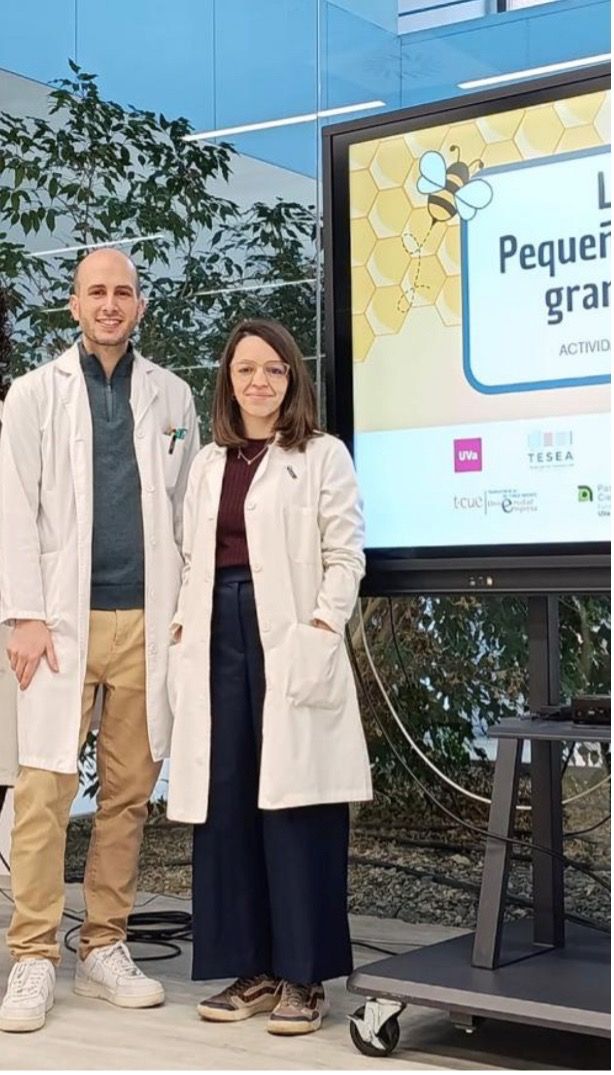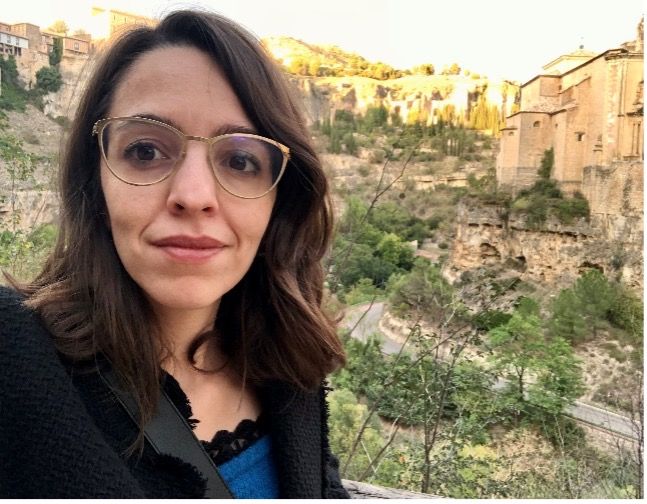A Sustainable Approach to Green Sample Preparation and Analytical Performance Using HS-SPME-GC–QTOF-MS
LCGC International spoke to Adrián de la Fuente and Silvia Valverde Bastardo from the University of Valladolid, Spain, about the development of a miniaturized headspace solid-phase microextraction gas chromatography–quadrupole time-of-flight mass spectrometry (HS-SPME-GC–QTOF-MS) method for the analysis of biogenic volatile organic compounds (BVOCs) emitted by native Spanish trees.
LCGC International spoke to Adrián de la Fuente and Silvia Valverde Bastardo from the University of Valladolid, Spain, about the development of a miniaturized headspace solid-phase microextraction gas chromatography–quadrupole time-of-flight mass spectrometry (HS-SPME-GC–QTOF-MS) method for the analysis of biogenic volatile organic compounds (BVOCs) emitted by native Spanish trees. Green assessment tools, including the analytical greenness calculator [AGREE], analytical greenness metric for sample preparation [AGREEprep], the complex green analytical procedure index [ComplexGAPI])AGREE, AGREEprep, and the ComplexGAPI were implemented to assess sustainability.
Adrián de la Fuente and Silvia Valverde Bastardo © Image courtesy of interviewees

You have recently published a paper showcasing a miniaturized headspace solid-phase microextraction gas chromatography-quadrupole time-of-flight spectrometry (HS-SPME-GC–QTOF-MS) method evaluating the profile of BVOCs from Spanish trees. What were the biggest challenges you faced in miniaturizing the method while still maintaining sensitivity and selectivity across such a range of biogenic volatile organic compounds (BVOCs)?
Silvia Valverde: One of the key challenges we faced was the limited sample available. As we were working with plant material collected from natural environments, we often had access to very small sample sizes, which meant we had to maximize extraction efficiency and analytical sensitivity within tight physical constraints. Miniaturizing the HS-SPME approach was essential, but it came with trade-offs. Smaller sample volumes can compromise the detection of low-abundance BVOCs, especially given their volatility and the chemical diversity present in tree emissions. To address this, we carefully optimized fiber selection, extraction time, and temperature to ensure efficient partitioning of analytes into the fiber coating without overloading or losing the most volatile compounds. Another important strategy was the use of chemometric tools. These allowed us to enhance data interpretation and discrimination power, even when signal intensities were low.
You evaluated your method using several green and blue analytical chemistry metrics. How did those assessments influence the final design of the workflow?
Adrián de la Fuente: Knowing from the start that the method would be evaluated under these criteria, we integrated sustainability considerations into each decision. For example, the choice of HS-SPME as a solvent-free technique was driven by analytical performance and its favorable green profile, minimizing waste and energy use. We opted for miniaturized sampling and short analysis times to reduce environmental impact, which also aligned with green analytical chemistry (GAC) principles. On the blue side, we considered operator safety and method simplicity during the workflow design. This led to the elimination of hazardous reagents and minimized sample manipulation.
Green chemistry was a priority in your method development. What trade-offs, if any, did you encounter between analytical performance and environmental sustainability?
De la Fuente: While we minimized reagents, waste, and sample handling by using HS-SPME and a fully solvent-free, miniaturized workflow, the use of GC–QTOF-MS introduces unavoidable limitations, primarily in terms of energy consumption. The instrument consumes over 1.5 kWh for each sample, which is a significant factor from a sustainability perspective. In addition, the temperature ramp required in GC limits sample throughput to approximately one analysis per hour. However, these trade-offs were considered acceptable given the analytical performance and the need for high-resolution, non-targeted screening of complex BVOC mixtures. Overall, while high energy consumption and offline analysis slightly reduced the green score, the method achieved strong sustainability metrics (analytical greenness calculator [AGREE], analytical greenness metric for sample preparation [AGREEprep], complex green analytical procedure index [ComplexGAPI]) and a blue applicability grade index (BAGI) score of 67.5, confirming its practical applicability. We consider these compromises necessary to meet both analytical and environmental goals.
How do you see your method contributing to the broader adoption of green sample preparation techniques in VOC analysis?
De la Fuente: Our method contributes to the broader adoption of green sample preparation techniques by providing a clear example of how miniaturization and solvent-free extraction can be effectively implemented without compromising analytical performance. Through systematic optimization of the SPME conditions, fiber selection, sample amount, and extraction/desorption times, we achieved high sensitivity and reproducibility using just 0.20 g of sample, with no need for derivatization or hazardous reagents. The simplicity of the workflow, combined with the use of standard, commercially available components like the divinylbenzene/carboxen/polydimethylsiloxane (DVB/CAR/PDMS) fiber and autosampler, makes the method accessible and adaptable to other VOC studies.
You used multiple green assessment tools like multiple green assessment tools Were there any discrepancies between them, and how did you reconcile their feedback during optimization?
De la Fuente: Although AGREE, AGREEprep, and ComplexGAPI provided similar final scores, each tool emphasized different aspects of the method, which helped us refine specific elements during development. AGREE and AGREEprep highlighted strengths such as the use of a solvent-free microextraction, minimal sample handling, and automation. AGREEprep also penalized ex-situ sample treatment and high energy consumption, factors also reflected in ComplexGAPI.
ComplexGAPI, being more restrictive, visually emphasized limitations such as offline analysis and the instrument’s energy demand. However, these were known trade-offs, inherent to achieving high-resolution untargeted profiling. These observations reinforced the critical balance we aimed to achieve between analytical performance and sustainability, confirming that the method aligns with current green standards while transparently addressing its technical constraints.
Do you think the concept of miniaturization—using only 0.2 g of sample—can be broadly applied in other green chromatographic workflows, especially in complex biological or environmental matrices?
Valverde: Miniaturization is a key strategy in green analytical chemistry, and using only 0.2 g of sample in our method exemplifies its potential to reduce environmental impact without sacrificing analytical reliability. This approach minimizes waste, avoids the need for solvents or reagents, and supports safer, more sustainable workflows. However, applying this concept broadly, particularly to complex biological or environmental matrices, requires careful consideration of sample heterogeneity, analyte concentration, and matrix effects. When working with limited amounts, there’s an inherent trade-off: reducing sample size can challenge sensitivity and reproducibility, particularly for low-abundance or highly labile compounds.
In our case, miniaturization was used due to limited access to plant material, so we focused on optimizing each step, fiber selection, extraction conditions, and instrumental settings to compensate for reduced analyte mass. The use of HS-SPME coupled with high-resolution GC–QTOF-MS allowed us to maintain selectivity and sensitivity even at this scale. Miniaturization is broadly applicable, but its success depends on the specific analytical goals and proper method validation.
How did you control for environmental variability (weather, stress conditions) across sampling locations and seasons to ensure reproducible BVOC profiles?
Valverde: This study represents an initial approach to profiling BVOC emissions from native Spanish trees under real field conditions. To account for environmental variability, sampling was conducted by trained environmental technicians from the Piedrahíta Environmental Region (Ávila, Spain), who guided site selection and sampling conditions. Although it's not possible to fully eliminate natural variability in field studies, we standardized several aspects to improve reproducibility.
Samples were always collected early in the day to minimize diurnal fluctuations, and material was taken from defined canopy zones to account for intra-tree variability. Immediately after collection, samples were frozen and stored at −86 °C to preserve their volatile profile. Seasonal variability was intentionally included through three sampling campaigns, winter, spring, and early autumn, to capture temporal shifts in BVOC composition. In addition, the selected species represented contrasting ecological and physiological profiles, including both coniferous and broadleaf trees with different fire response strategies. While age-related differences in BVOC emissions are well known, young trees often emit lower quantities and show greater variability, and so we focused on mature individuals to ensure more stable and representative profiles. Although age stratification was beyond the scope of this initial study, it remains a relevant factor to explore in future research.
Could you elaborate on the chemometric tools you used—such as principal component analysis (PCA) and hierarchical clustering—and how they helped validate the analytical performance of the method??
Valverde: We used PCA and hierarchical cluster analysis (HCA) to evaluate the method’s ability to differentiate BVOC profiles across species, seasons, and canopy zones. PCA, supported by a strong Kaiser-Meyer-Olkin (KMO) value (0.85), reduced data complexity and explained nearly 70% of the variance with just two components. This allowed clear separation between species and identification of key discriminant compounds such as aromandendrene and cubebene, confirming the method’s selectivity and sensitivity. HCA complemented this by highlighting consistent compound clusters within species and sampling conditions, reinforcing the method’s reproducibility. Together, these chemometric tools validated the analytical performance and showed that the method reliably captures biologically and ecologically meaningful variation in complex matrices.
Are you planning to develop this research further?
Valverde: Our next steps involve continuing work in the same region to build a more comprehensive, long-term dataset. Extending the study over multiple years would allow us to assess interannual variability and the influence of climate trends on BVOC emissions.
We also plan to increase the number of samples and include both young and mature trees to better understand how the developmental stage influences emission patterns. This expanded sampling will improve the ecological resolution of the data and help identify age-related or stress-induced changes in BVOC profiles.
Reference
(1) Fuente-Ballesteros, A.; Ares, A. M.; Bernal, J.; Valverde, S. Miniaturized Analytical Method to Evaluate the Profile of Biogenic Volatile Organic Compounds from Spanish Tree Species by Gas Chromatography Coupled to Mass Spectrometry and Chemometric Tools. J. Chromatogr. Open 2025, 7, 100208. DOI: 10.1016/j.jcoa.2025.100208
Adrián de la Fuente; Image courtesy of interviewee

Adrián de la Fuente is a postdoctoral fellow in analytical chemistry at the University of Valladolid in Spain. He is a member of the recognized research group TESEA (Separation Techniques and Applied Analysis) at the University of Valladolid. His research focuses on the development and validation of novel analytical methodologies for the determination of target analytes in food and environmental matrices. He has worked extensively with bioactive compounds, alkaloids, plasticizers, and biogenic volatile organic compounds, and has a strong background in the analysis of pesticide residues in bee products using chromatographic techniques (LC and GC–MS). He specializes in integrating sustainability into analytical workflows through the design and application of assessment tools and metrics aligned with the principles of White Analytical Chemistry, aiming to promote greener and more practical methods. Throughout his career, he has built a solid research track record, including multiple publications, over 50 conference presentations, two book chapters, one patent, more than 30 science outreach activities, teaching experience, and international collaborations. He is also an active reviewer and serves on the editorial boards of several high-impact journals. His contributions to the field have been recognized with several awards, including the IMFAHE Excellence Scholarship, the EuChemS Young Chemists’ Award, and the National Youth Science Award. He was also selected to join the Nova Talent Network, which brings together the top 3% of young talent in Spain.
Silvia Valverde Bastardo; Image courtesy of interviewee

Silvia Valverde Bastardo is a tenured professor in analytical chemistry at the University of Valladolid. She is also a member of the recognized research group TESEA (Separation Techniques and Applied Analysis) at the University of Valladolid. She specializes in the development and enhancement of analytical methodologies for bioactive, pesticide, and pollutant compounds determination in agri-food matrices. She has a strong focus on chromatographic techniques (LC and GC) coupled with several detectors, specifically mass spectrometry and tandem mass spectrometry, as well as on sample treatment and extraction techniques. She completed her Ph.D. in 2018 at the University of Valladolid. She subsequently worked in the private sector and undertook a postdoctoral stage at the Autonomous University of Madrid, where she was closely associated with the fertilizer sector. In 2022, she joined the Department of Analytical Chemistry at the University of Valladolid as an assistant professor, where she currently works. She has authored 36 scientific publications, four book chapters, and has received over 500 citations, in addition to participating in 14 research projects. She is also a member of the editorial board of several journals.
New Method Explored for the Detection of CECs in Crops Irrigated with Contaminated Water
April 30th 2025This new study presents a validated QuEChERS–LC-MS/MS method for detecting eight persistent, mobile, and toxic substances in escarole, tomatoes, and tomato leaves irrigated with contaminated water.
University of Tasmania Researchers Explore Haloacetic Acid Determiniation in Water with capLC–MS
April 29th 2025Haloacetic acid detection has become important when analyzing drinking and swimming pool water. University of Tasmania researchers have begun applying capillary liquid chromatography as a means of detecting these substances.

.png&w=3840&q=75)

.png&w=3840&q=75)



.png&w=3840&q=75)



.png&w=3840&q=75)


